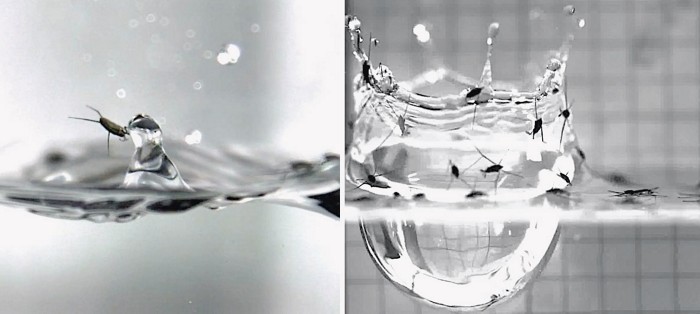Advertisement
Grab your lab coat. Let's get started
Welcome!
Welcome!
Create an account below to get 6 C&EN articles per month, receive newsletters and more - all free.
It seems this is your first time logging in online. Please enter the following information to continue.
As an ACS member you automatically get access to this site. All we need is few more details to create your reading experience.
Not you? Sign in with a different account.
Not you? Sign in with a different account.
ERROR 1
ERROR 1
ERROR 2
ERROR 2
ERROR 2
ERROR 2
ERROR 2
Password and Confirm password must match.
If you have an ACS member number, please enter it here so we can link this account to your membership. (optional)
ERROR 2
ACS values your privacy. By submitting your information, you are gaining access to C&EN and subscribing to our weekly newsletter. We use the information you provide to make your reading experience better, and we will never sell your data to third party members.
Water
Newscripts
A post-Thanksgiving odor and serious recognition for a silly names
by Manny I. Fox Morone
January 5, 2024
| A version of this story appeared in
Volume 102, Issue 1
Something in the water

In 2021, David Ladner drove up to a wastewater treatment plant in Pendleton, South Carolina, with his kids in tow. Ladner, a professor of environmental engineering at Clemson University, wanted to confirm something he’d heard almost 20 years ago when he was a PhD student: on the day after Thanksgiving, you can catch a whiff of turkey in wastewater plants.
This qualitative experiment was the topic of a recent episode of The Outfall, a podcast that Ladner cocreated and cohosts. After visiting the plant the day before and the day after Thanksgiving, Ladner claims the smell was in fact there, and his teenage son was there to corroborate the observation.
“Wastewater obviously has a foul smell,” Ladner tells Newscripts. “But then the turkey aroma on top of it smells just like your house does when you’ve got a turkey toward the end of the cooking process.”
Manish Kumar, a professor and water resource engineer at the University of Texas at Austin, originally told Ladner about this phenomenon but thought it was an urban legend. “A lot of the administrative people don’t know about it, and some operators don’t even know about it because it depends on who’s on shift” the day after Thanksgiving, Kumar says.
Naturally, this Newscriptster wanted to know whether any other holidays create such a notable odor; neither Kumar nor Ladner could think of any. “But in the summer months, things can get kind of rank,” Ladner says, as smelly anaerobic bacteria populations encroach on less-pungent aerobic microbes and oxygen levels fall in the warmer wastewaters of summer.
Partly inspired by Ladner’s outing to the wastewater plant, Kumar plans to get quantitative about the turkey smell. By borrowing a special type of mass spectrometer from a colleague, he hopes to set up an air-sampling experiment to figure out what compounds could be behind the smell.
Kumar guesses the smell is from turkey bits and grease that travel down kitchen drains rather than waste coming from human digestive tracts. He hasn’t found any reports detailing what turkey metabolites smell like after digestion, but there’s no reason to think that they’d smell like turkey. He says if anyone thinks they know the chemical culprit of the smell, contact him.
What’s in a name?
On Nov. 24, process chemist Rob Newland put out a call to chemists on X, formerly Twitter, asking if anyone knew how to add a nickname to SciFinder’s compound database. Newland created a 2-phosphinophosphinine ligand (CAS: 2097080-61-8) several years ago during his PhD studies at Heriot-Watt University, and he feels it’s not too much to ask to let him name the compound as part of the long legacy of nicknaming phosphorus-containing ligands. His proposed name: 2Phos2Furious.

Newland tells Newscripts that the name, which is a pun on the Fast & Furious movie franchise, reflects the ligand’s two phosphorus donors and “encompasses the frustration and difficulties I experienced working on phosphinines,” often hard-to-make and unstable molecules. The family of compounds, which he used for a variety of organometallic reactions, led to “some rage moments in the first 2 years of my PhD.”
Newland’s post has garnered more than 500 likes—viral in the world of esoteric phosphorus ligands—but, Newland says, still no response from SciFinder, which is a product of CAS, a division of the American Chemical Society, publisher of C&EN.
Newscripts reached out to CAS to see what hoops one has to go through to get a molecular moniker into its database. A CAS spokesperson responded, “Nicknames need to either be published in reputable scientific literature or patent or be in commercial use.”
Does Newscripts qualify as reputable scientific literature? Probably not. But that doesn’t mean it’s the end of the road for 2Phos2Furious: Newland’s former PhD adviser, Stephen Mansell, says his lab is still working with the ligand, so more publication opportunities may be coming.
Please send comments and suggestions to newscripts@acs.org.





Join the conversation
Contact the reporter
Submit a Letter to the Editor for publication
Engage with us on Twitter